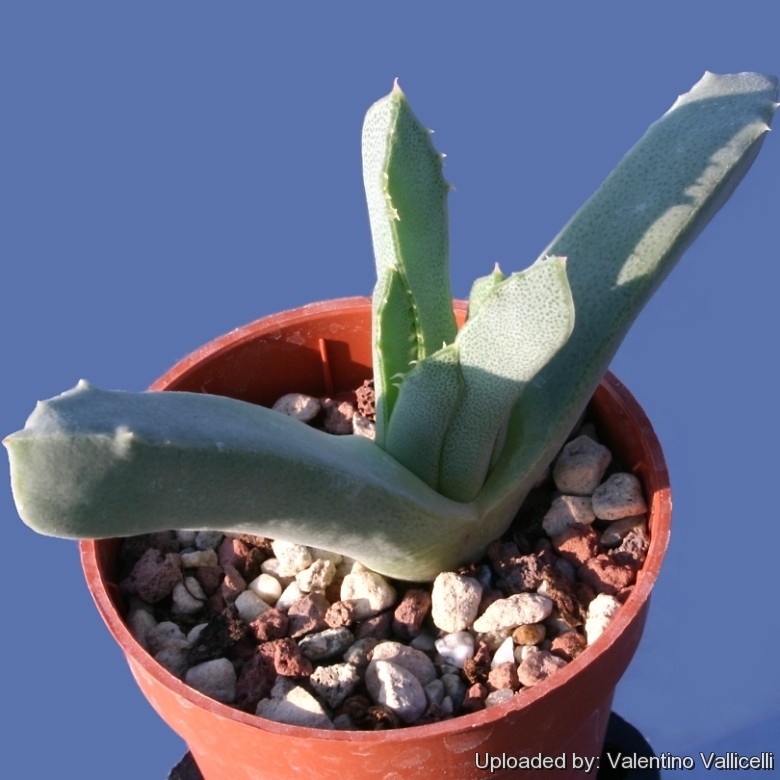
Odontophorus angustifolius Photo by: Valentino Vallicelli
Origin and Habitat: Northern Cape (Little Namaqualand, West of Steinkopf), Republic of South Africa.
habitat: Odontophorus angustifoliusSN|18094]]SN|18094]] grows in Succulent Karoo in sandstone ridges, rocky slopes and hilltops mainly on yellow or pinkish quartzite. Annual precipitation is approximately 100-200 mm, mostly in winter.
Synonyms:
See all synonyms of Odontophorus angustifolius
Description: Odontophorus angustifoliusSN|18094]]SN|18094]] is a small caespitose succulent shrub up to 8 cm hight, occasianally forming large mats up to three meters across, but usually much smaller
Distinguishing characteristics: It has spongy stems and slender leaves with teeth long and flexible.
Stem: Short, ramified, with internodes spongy inside, smooth outside, light brown to orange or ochre, shorter than leaves, 3-5 mm in diameter.
Leaves: Slender, 40-50 mm long, 7-10 mm thick, (thicker than the other species) irregularly toothed at keel and margins with 0-4 teeth up to 5 mm long, flexible, green to reddish, rising from a broad plain block, elevations low, papillae short, surface therefore soft rather than velvety.
Flowers: Solitary and terminal, daisy-like, yellow up to 40 mm in diameter.
Fruit: The fruit is a capsule with long pedicels and widely spreading bracteoles.
Seeds: Less than 1 mm long, pale brown, pear-shaped.
More...Subspecies, varieties, forms and cultivars of plants belonging to the Odontophorus angustifolius group
Notes: In habitat Odontophorus angustifoliusSN|18094]]SN|18094]] can form very large mats that, when the plants die, remain for several years in form of black dried mummies preserved by the dry climate.
Bibliography: Major references and further lectures
1) Heidrun E. K. Hartmann “Aizoaceae F – Z” Springer, 2002
2) Hartmann. H. “Monographie der Gattung Odontophorus” Botantsche Jahrbucher 97: 161-225 (1976)
3) Jacobsen. “Handbook of succulent plants” 1328 (1960)
4) James Cullen, Sabina G. Knees, H. Suzanne Cubey “The European Garden Flora Flowering Plants: A Manual for the Identification of Plants Cultivated in Europe, Both Out-of-Doors and Under Glass - Casuarinaceae to Aristolochiaceae” Cambridge University Press, 11/ago/2011
5) Hammer, S.A. & van Jaarsveld, E. 2005. "Odontophorus angustifolius L.Bolus subsp. angustifolius." National Assessment: Red List of South African Plants version 2013.1. Accessed on 2013/10/06
More... Locality: Rooiberg Photo by: Valentino Vallicelli
Locality: Rooiberg Photo by: Valentino Vallicelli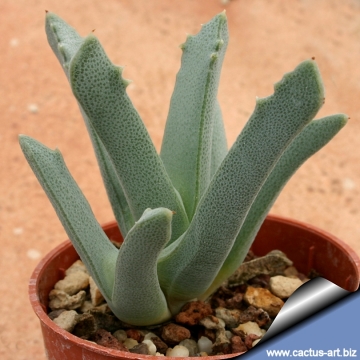 Odontophorus angustifolius Photo by: Cactus Art
Odontophorus angustifolius Photo by: Cactus Art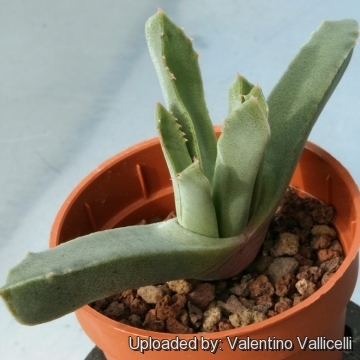 Odontophorus angustifolius Photo by: Valentino Vallicelli
Odontophorus angustifolius Photo by: Valentino Vallicelli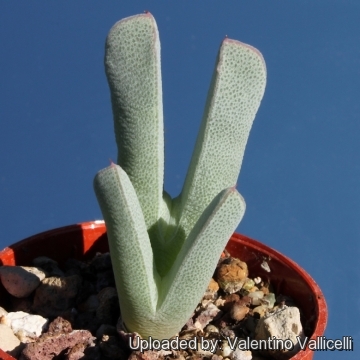 - Locality: Rooiberg Photo by: Valentino Vallicelli
- Locality: Rooiberg Photo by: Valentino Vallicelli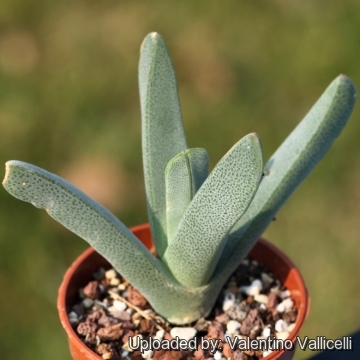 Odontophorus angustifolius sw Rooiberg (MG 1782.83). Photo by: Valentino Vallicelli
Odontophorus angustifolius sw Rooiberg (MG 1782.83). Photo by: Valentino VallicelliSend a photo of this plant.The gallery now contains thousands of pictures, however it is possible to do even more. We are, of course, seeking photos of species not yet shown in the gallery but not only that, we are also looking for better pictures than those already present.
Read More... Cultivation and Propagation: The Odontophorus are easy to grow. Odontophorus pusillusSN|18093]]SN|18093]] seems to prefer a fairly dry rest in summer but grows whenever watered. It is easy to grow.
Soil: Requires good drainage as it it is prone to root rot. It can grows outdoor in sunny, dry, rock crevices (protection against winter wet is required) It can also be cultivated in alpine house, in poor, drained soil.
Fertilization: Feed it once during the growing season with a fertilizer specifically formulated for cactus succulents (poor in nitrogen), including all micro nutrients and trace elements diluted to ½ the strength recommended on the label. It thrives in poor soils and need a limited supplies of fertilizer to avoid the plants developing excess vegetation, which is easily attacked by fungal diseases.
Watering: They are not at all delicate and can take some water year-round. Water minimally in winter, only when the plant starts shrivelling, water more abundantly when they are growing in the autumn and spring, but let the soil dry between soaking. An occasional summer soaking is wise. If grown in a container, bottom watering by immersing the container is recommended. It must have very dry atmosphere.
Light: It needs a bright sunny or light shade exposure in winter, but keep cool and partially shaded in summer.
Hardiness: It prefer a very bright situation and require a minimum temperature 0°C (But will take frost and is hardy down to -12° C or less for short periods if is in dry soil ). USDA zones (8-)9-11. The earlier in the year they are planted, the better the chances for winter survival. True with many of the Mesembryanthemaceae.
Uses: They are hardy and they look fine in a cold greenhouse, frame, in containers or outdoor in a rockery.
Pests & diseases: They may be attractive to a variety of insects, but plants in good condition should be nearly pest-free, particularly if they are grown in a mineral potting-mix, with good exposure and ventilation. Nonetheless, there are several pests to watch for:
- Red spiders: they may be effectively rubbed up by misting the vulnerable plants every day.
- Mealy bugs: Occasianlly mealy bugs develop aerial into the new leaves and flowers with disfiguring results, but the worst types develop underground on the roots and are invisible except by their effects.
- Sciara Flies: Sciara Flies are one of the major problems for seedlings. It is a good practice to mulch your seedlings with a layer of grit, which will strongly discourage the flies.
- Scales, thrips and aphids: This insects are rarely a problem.
It is wise to treat your whole collection with a systemic insecticide twice a year in spring and autumn.
- Rot: Rot it is only a minor problem with mesembs if the plants are watered and “aired” correctly. If they are not, fungicides won't help all that much.
Propagation: Seed in spring or (or rarely) cuttings. To make a cutting twist off a branch with at least a part of roots and permit it to dry out a couple of days, lay it on the soil and insert the stem end partially into the soil. Try to keep the cutting somewhat upright so that the roots are able to grow downward.
Hardiness: It prefer a very bright situation and require a minimum temperature -5°C (or less if dry). USDA zones 9A – 11.
Uses: Container, rock garden.
Pests and diseases: It is vulnerable to mealybugs and rarely scale.
Propagation: Seed in spring or (or rarely) cuttings. To make a cutting twist off a rosette with at least a part of stem and permit it to dry out a couple of days, lay it on the soil and insert the stem end partially into the soil. Try to keep the cutting somewhat upright so that the roots are able to grow downward.
More...















